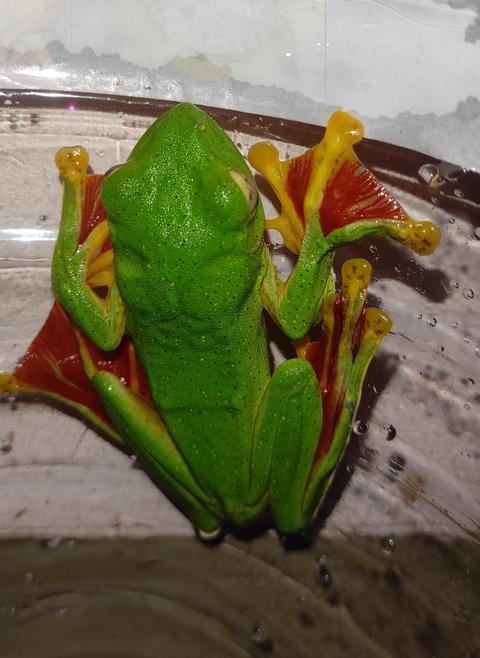
Manjunath Nayak:
The sighting of Malabar Gliding Frog in a non-Western Ghats region has brought three cheers to biodiversity researchers. Endemic to rainforests of Western Ghats, this species has been found in Hirebagewadi, Bailhongal taluk, Belagavi district, Karnataka, India.
Shivakumar Patil, a journalist and wildlife lover has captured the images of the Malabar Gliding Frog resting near his office wall and later, he released it on a tree near a water body. Although its population has been decreasing due to habitat loss, it has been listed as “least concern” under the IUCN Red List.
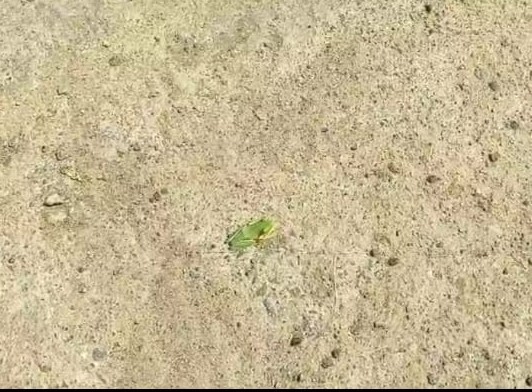
As cold-blooded creatures, each species has a diverse lifestyle and different reproductive processes. Frogs that croak so loudly during the rainy season disappear in the summer as if their tribe never existed. As the sun rises, most frogs move to humid areas and hibernate, slowing down their metabolism and using their body fat for energy.
Rain and frogs have an inextricable relationship. Rain keeps frogs’ bodies moist and prevents them from dehydrating. The humid environment created by rain helps them travel long distances to find water sources to lay their eggs. Some shrub frogs lay their eggs on the leaves of moist tree barks, requiring constant rainfall to keep the eggs moist.
The green tree frog called the Malabar Gliding Frog will seek out a source of standing water, no matter how far away it is, where it produces foam from its body and lays its eggs. The outside of the foam hardens into a nest. The eggs, which grow in the moisture inside the nest, slip into the water after a week.
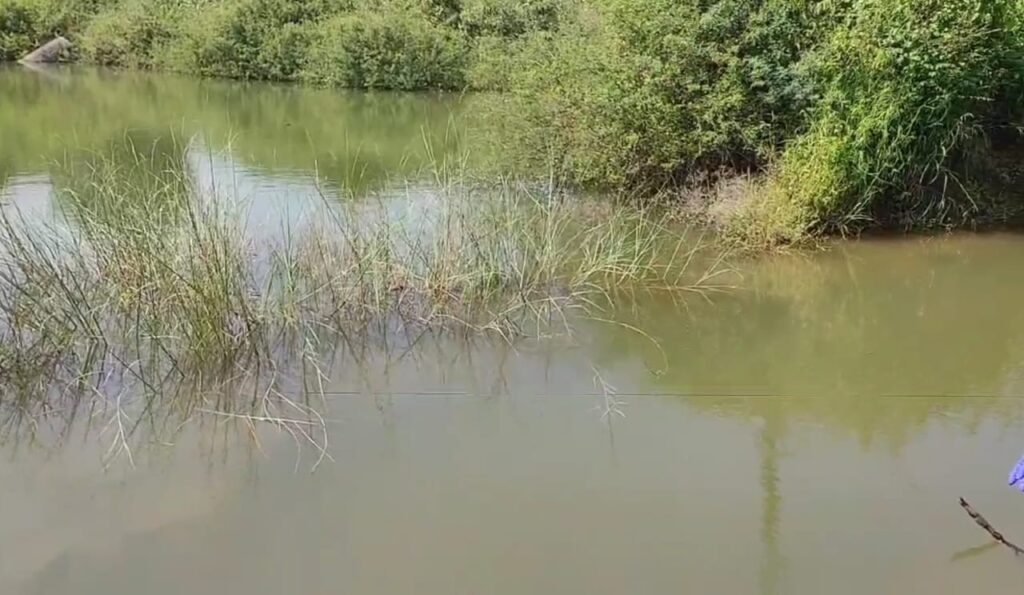
In some species of frogs, the number of males is high, with 20-30 males per female. While the males are busy calling to attract a mate, the females are mostly silent and follow the fluctuations in the sound of the male’s calls and approach the male they like to mate. Such characteristics are most commonly seen in the Malabar Gliding Frog and the false hour glass tree frog. Male frogs also fight for females, and group wrestling, involving hand-to-hand pushing, grabbing, and kicking, is common.
Sometimes, surprisingly, a male of a different species can be seen mating (amplexus) with a female of a different species. In such cases, even if the female lays eggs, the eggs will not be fertilized by the sperm of the male of a different species. Sometimes, the offspring born through interbreeding have completely lost their reproductive capacity, and interbreeding is not possible in our country.
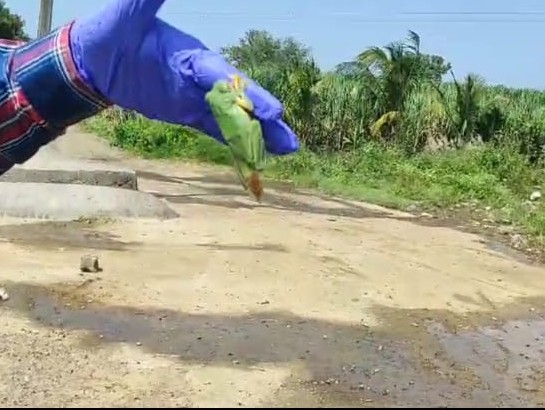
As the rainy season begins, you can see hordes of frogs moving along the banks of lakes. The tadpoles of this species of frog spend 6-8 months in the water, complete their tadpole stage, and move towards the forest when the rains begin. For this species of frog to survive, there must be a water source that is available year-round.
Frogs are indicators of the health of our environment, and their destruction as links in the food chain directly impacts agriculture. Frogs, like most insects in rice fields, act as pest controllers. Global climate change, excessive use of chemicals, and polluted water sources are all challenges for them.
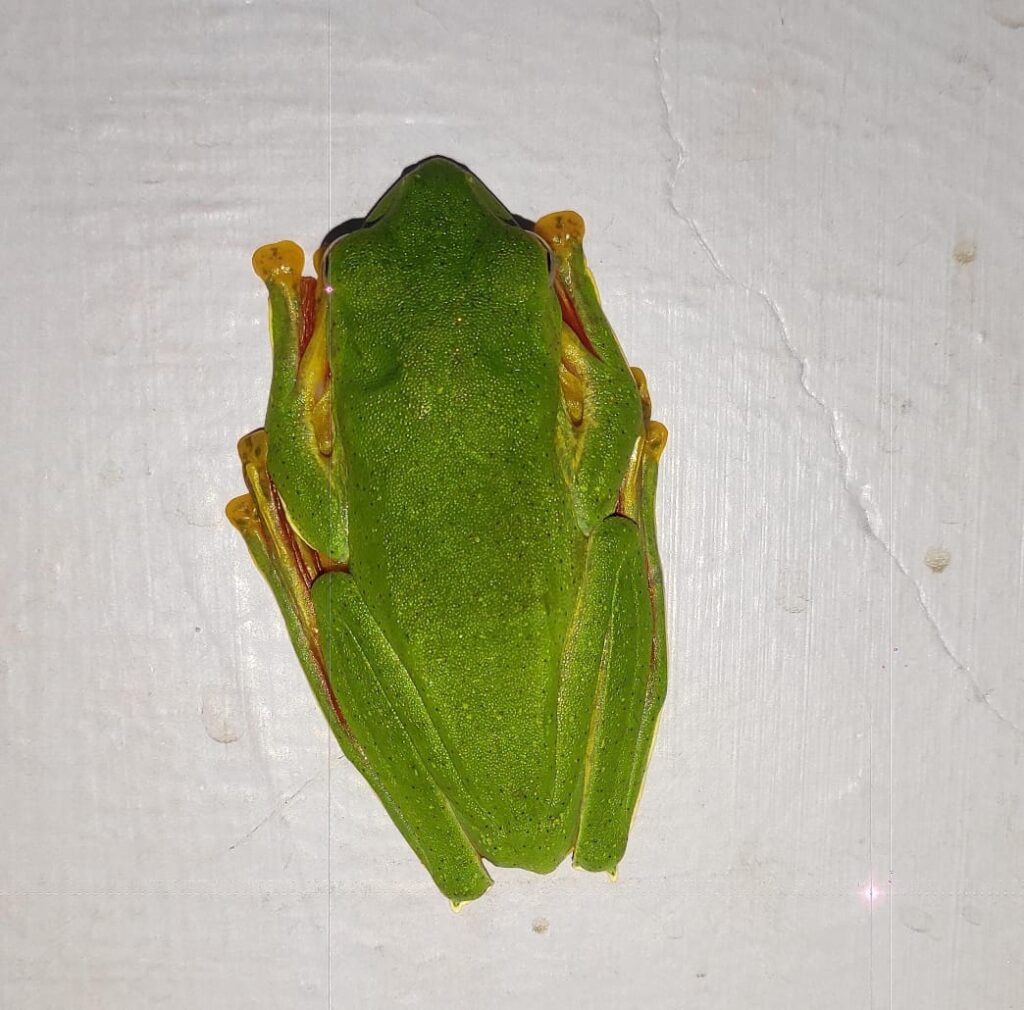
The Malabar Gliding Frog use the leaves of trees near water as nests to reproduce. The reason behind this is that the eggs in the nest must fall directly into the water after 7-8 days. The foam-like layer of the nest protects the fertilized eggs.
Frogs play an important role in the balance of nature, acting as natural healers by eating insects that spread diseases. But recently, due to the depletion of groundwater sources, the frog population has been heading towards extinction.

Global warming and wildfires are also main reasons for reduction in population. Tadpoles might have come along with water flow and become adults here at Hirebagewadi.
(PHOTO CREDIT: ALL IMAGES BY SHIVAKUMAR PATIL, BELAGAVI)
